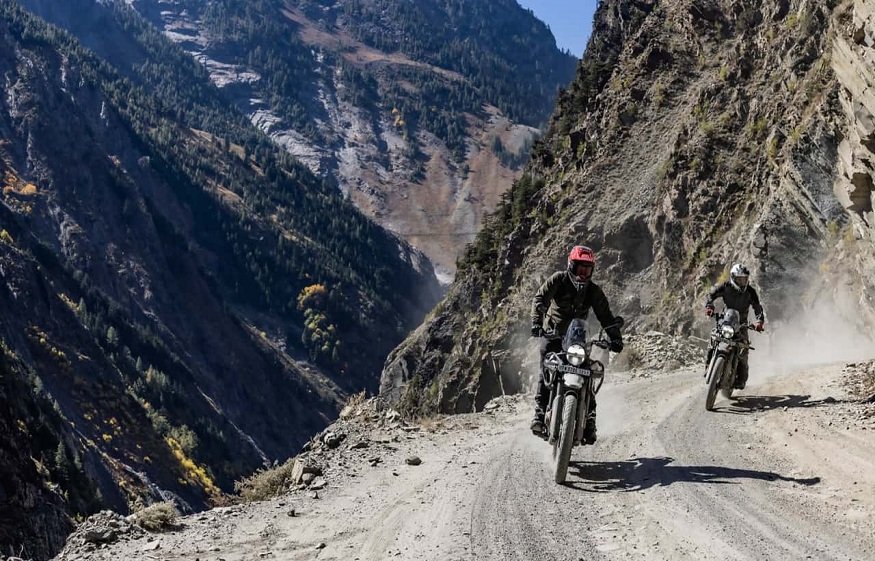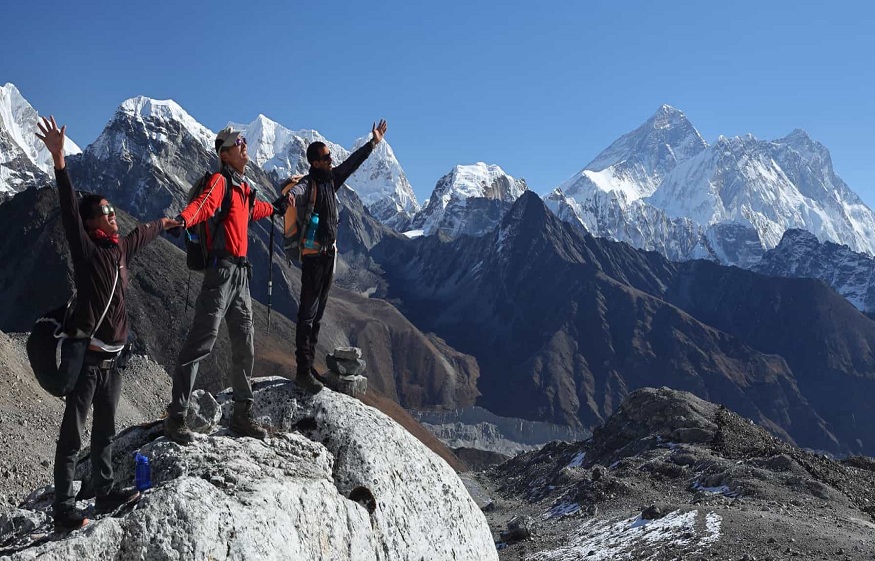The Himalayas have continuously been a source of interest for trekkers and mountain climbers alike. From the quiet trails of Langtang Valley to the towering peaks of Himlung and Manaslu, and the all encompassing dawn sees from poon Hill, Nepal offers a differing extent of trekking and climbing encounters. Each goal presents its own set of challenges and rewards, mixing characteristic excellence, social lavishness, and the excitement of high-altitude enterprise. Whether you are trekking through the tranquil Langtang Valley, summiting the specialized Himlung Himal, or setting out on an Expedition to Mt. Manaslu, the encounter will take off you in amazement of the Himalayas’ grandeur.
Langtang Valley Trek
The Langtang Valley trek is one of Nepal’s most fulfilling however open treks. It is regularly called the “Valley of Ice sheets” due to its proximity to the Langtang Lirung run and various icefalls. Langtang Valley trek 10-day trek Beginning from Syabrubesi, the path takes after the Langtang Waterway, passing through thick rhododendron woodlands, yak pastures, and charming Tamang towns. Trekkers can appreciate views of snow-capped peaks like Langtang Lirung (7,227 m), Dorje Lakpa (6,966 m), and Shishapangma (8,013 m).
This trek is culminated for those looking for a direct trekking challenge with wealthy social interaction. The nearby Tamang individuals, affected by Tibetan culture, give warm neighborliness and understanding into their antiquated conventions. Kyanjin Gompa (3,870 m) is the most elevated point of the trek, advertising dazzling views of the encompassing peaks and ice sheets. Trekkers frequently take an extra climb to Kyanjin Ri (4,773 m) for a breathtaking all encompassing view.
Highlights of Langtang Valley Trek
- Breathtaking sees of Langtang Lirung, Dorje Lakpa, and Shishapangma
- Traditional Tamang towns and Buddhist monasteries
- Wildlife spotting, counting ruddy pandas and Himalayan tahr
- Yak cheese generation at Kyanjin Gompa
- Opportunity to climb to Kyanjin Ri for 360-degree mountain views
Altitude and Ailment in Langtang Valley Trek
The most noteworthy point of the Langtang Valley trek is Kyanjin Ri at 4,773 meters. Whereas the height is not as extraordinary as a few other treks, it can still lead to intense mountain affliction (AMS) if not overseen legitimately. Trekkers ought to acclimatize by investing additional time at Kyanjin Gompa and rising steadily. Side effects of AMS incorporate cerebral pain, queasiness, tipsiness, and shortness of breath. Drinking bounties of water, keeping up a relentless pace, and dodging liquor can offer assistance to diminish the chance of elevation sickness.
Packing and Adapt for Langtang Valley Trek
Packing appropriately is fundamental for an effective Langtang Valley trek. Here’s a list of fundamental items:
Clothing: Moisture-wicking base layers, downy or down coat, waterproof shell coat and pants, warm gloves, and a warm hat.
Footwear: Durable trekking boots with lower leg back and comfortable socks.
Sleeping Equip: A four-season resting pack appraised for at slightest -10°C.
Other Basics: Shades, sunscreen, trekking posts, headlamp, water decontamination tablets, and an essential first-aid kit.
Himlung Himal Expedition

The Himlung Himal Expedition is a challenging high-altitude climb found in the inaccessible Nar-Phu Valley close to the Tibetan border. Himlung Himal stands at 7,126 meters and is considered one of the more available 7,000-meter peaks in Nepal. In any case, the Expedition requires specialized climbing aptitudes, counting the utilization of crampons, ice tomahawks, and settled ropes.
The trip to Himlung Himal starts with a trek through the confined Nar-Phu Valley, which offers a glimpse into the old Tibetan-influenced culture of the region. Climbers ordinarily build up three tall camps some time recently making the summit thrust. The climb includes navigating ice sheets, soak ice dividers, and uncovered edges. The last climb rewards climbers with an awe-inspiring see of Annapurna II, Gangapurna, and Manaslu.
Highlights of Himlung Himal Expedition
- Remote and socially wealthy Nar-Phu Valley
- Technical climb with blended snow, ice, and shake sections
- Stunning sees of Annapurna and Manaslu ranges
- Opportunity to investigate old Tibetan-style villages
- Requires great mountaineering aptitudes and legitimate acclimatization
Altitude and Affliction in Himlung Himal Expedition
With a summit of 7,126 meters, the Himlung Himal Endeavor presents a noteworthy chance of elevation affliction. Acclimatization is pivotal, and climbers more often than not take at least 10 to 14 days to alter to the elevation. The key to an effective climb is a moderate and consistent pace, appropriate hydration, and recognizing the early signs of AMS. Oxygen levels are essentially lower at this height, which can lead to weariness, migraines, and breathlessness. Crisis plummet and supplementary oxygen may be required in serious cases.
Packing and Equip for Himlung Himal Expedition
Due to the specialized nature of the climb, specialized equip is required:
Clothing: Overwhelming down coat, protects pants, warm base layers, waterproof shell coat, and climbing gloves.
Climbing Equip: Crampons, ice hatchet, climbing tackle, head protector, and carabiners.
Sleeping Equip: Expedition-grade resting pack appraised for -20°C or colder.
Safety Adapt: Ropes, ascenders, torrential slide handset, and a high-altitude tent.
Mt. Manaslu Expedition
At 8,163 meters, Mt. Manaslu is the eighth-highest mountain in the world. The Mt.Manaslu Expedition is known for its inaccessible area and challenging climb, which incorporates specialized ice and snow areas. The climb takes after the Manaslu Circuit trek, a fabulous path that encompasses the Manaslu massif and passes through old Buddhist towns, tall mountain passes, and frigid valleys.
Climbers ordinarily build up four tall camps on the rising, with the last summit thrust including soak ice and snow inclines. The climb requires solid specialized abilities and past high-altitude involvement. The summit offers breathtaking views of the Annapurna extend, the Tibetan level, and encompassing peaks.
Highlights of Mt. Manaslu Expedition
- One of the most farther and slightest swarmed 8,000-meter peaks
- Stunning sees of the Annapurna extend and Tibetan plateau
- Technical climb with ice, shake, and blended sections
- Rich Buddhist culture in encompassing villages
- Requires earlier encounter with high-altitude mountaineering
Altitude and Affliction in Mt. Manaslu Expedition
Altitude affliction is a noteworthy concern amid the Manaslu Expedition. With a summit at 8,163 meters, the hazard of AMS, high-altitude respiratory edema (HAPE), and high-altitude cerebral edema (HACE) increases altogether. Acclimatization is carefully overseen through organized climbs and rest days at base camp. Crisis departure choices are restricted due to the inaccessible location.
Packing and Adapt for Mt. Manaslu Expedition
Climbers require specialized high-altitude gear:
Clothing: Expedition down suit, warm base layers, protective gloves, and a balaclava.
Climbing Adapt: Settled ropes, crampons, ice hatchet, and carabiners.
Safety Equip: Oxygen veil and barrel, torrential slide signal, and adherent communication device.
Sleeping Equip: High-altitude resting sack evaluated for -30°C or colder.
Ghorepani poon Hill Trek
The Ghorepani Poon Hill trek is one of the most prevalent brief treks in Nepal. It offers an easy-to-moderate path through rhododendron timberlands, terraced areas, and Gurung towns. The highlight of the trek is the dawn sea from poon Hill (3,210 meters), where trekkers can witness the brilliant gleam of Annapurna, Dhaulagiri, Machhapuchhre, and Nilgiri.
Highlights of Ghorepani poon Hill Trek
- Stunning dawn see over the Annapurna and Dhaulagiri ranges
- Traditional Gurung and Magar villages
- Easy get to from Pokhara
- Moderate elevation, making it reasonable for beginners
- Short trek, ordinarily completed in 3–4 days
Altitude and Ailment in Ghorepani poon Hill Trek
At 3,210 meters, height ailment is exceptional but conceivable if trekkers climb as well rapidly. Remaining hydrated, taking rest breaks, and altering the pace can offer assistance to avoid discomfort.
Packing and Adapt for Ghorepani poon Hill Trek
- Light clothing for daytime and warm layers for the evening
- Comfortable trekking shoes
- Raincoat and trekking poles
- Headlamp and control bank
Conclusion
From the quiet trails of Langtang Valley to the high-altitude challenges of Himlung and Manaslu, and the breathtaking dawn from Poon Hill, Nepal’s Himalayan Expeditions cater to all levels of trekkers and climbers. Each goal offers an interesting combination of common magnificence, social involvement, and individual challenge.
Booking Process by Churen Himal Trek:
To book any of these treks tours through Churen Himal Trek and Expedition Pvt.Ltd , begin by contacting them via email at [email protected] or phone or WhatsApp at +977 9860204721 to discuss your preferred dates, group size, and specific needs. They will provide a detailed itinerary covering these trek’s duration, highlights, cost, and inclusions such as a guide, porter, meals, accommodation, and transportation.
Prior to the trek, you will receive a comprehensive pre-trek briefing with essential information on packing, fitness preparation, and altitude acclimatization. The agency will finalize all logistical arrangements, including transportation, accommodation, and permits, to ensure everything is in place for your trek. Upon arrival in Nepal, the team will ensure that all aspects of the trek are organized, providing you with a smooth and unforgettable experience on these treks.




